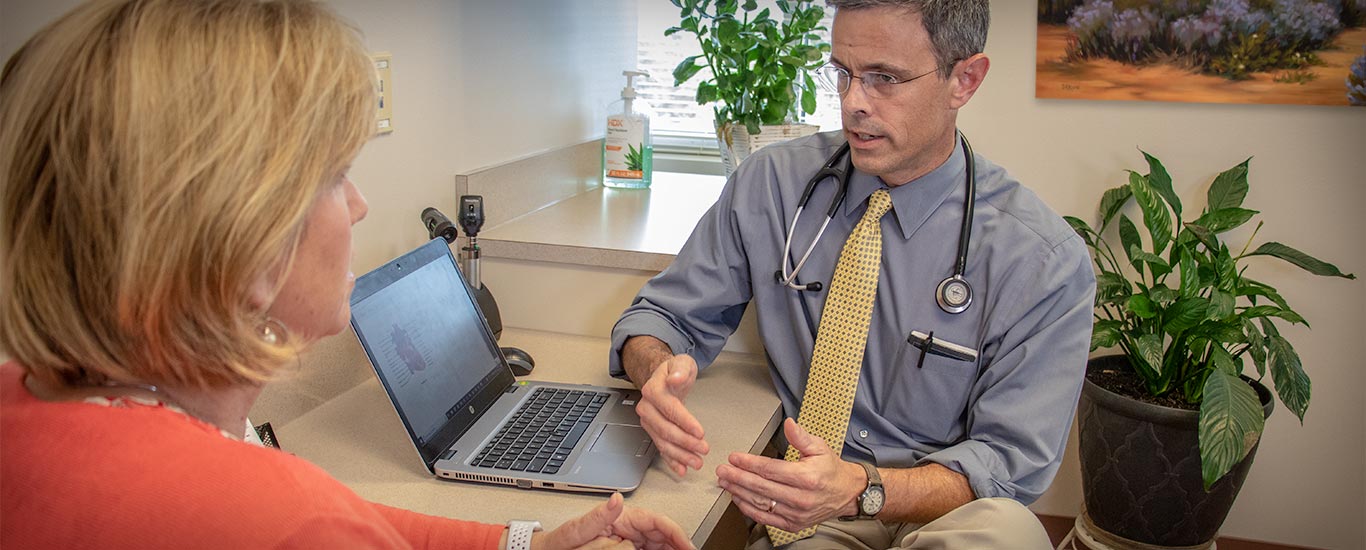Check Your Blood Pressure the Right Way!
Greetings to all of you members of Sentinel Primary Care. We’re going to get into the medical content in just a moment, but for this members video I actually wanted to open with a story. As you probably know, a portion of our work here is charitable care. I give away a portion of my care for folks who don’t have insurance. A few weeks ago, we were seeing a person who was coming in to receive charitable care. At the end of the visit her bill was a few dollars and the bill that she had to pay us with was the next increment up from whatever her fee was for the visit. When we went to make change for her, she wouldn’t take the change. She said, “Keep the change and use it for somebody else who needs charitable care.” She wouldn’t take her money back. She said, “You never have too little to give some of it away.” I’ll tell you, I went home humbled that day. Thank you for being a part of Sentinel Primary Care. Merry Christmas.
Now on to the medical part.
You might have seen a few weeks ago that the American College of Cardiology and the American Heart Association came out with new blood pressure treatment guidelines. They got some attention because they were fairly ambitious in terms of lowering the treatment thresholds for all that or recommend you talk to your doctor. There’s a lot of professional discussion around these guidelines.
How to take your own blood pressure
What I wanted to talk about was how to check your own blood pressure as discussed in these guidelines because they have some specific recommendations. I’m going to talk about four components of checking your blood pressure according to these new guidelines.
- Preparation. The guidelines recommend that for 30 minutes before you check your blood pressure you do not exercise, you do not smoke, and you do not have caffeine. So don’t check your blood pressure while you’re sipping on a cup of coffee.
- Equipment. Make sure you use the correct size cuff. If you have the wrong size, you’re going to get consistently inaccurate numbers. For this I refer you to the instructions on your particular machine. When you’re putting your cuff on, it is preferable that you put the cuff against bare skin rather than checking the reading through your sleeve. This way, you are less likely to get inaccuracy because of the sleeve.
- Positioning matters. Sit in a chair with back support rather than lying down or lying back into a squishy sofa. Sit down, lean back into the back support, feet on the floor, and then your arm should rest comfortably at tabletop height or if you have an armrest on the chair at about armrest height.
- Wait before taking the reading. Perhaps the most important of these is that before you hit start on your machine you are supposed to wait five minutes. That’s a long, long time.
I hope that’s all good, useful information. For Sentinel Primary Care in Brier Creek in Raleigh, I’m Dr. Patrick O’Connell. Merry Christmas.
Thoughts on the new blood pressure targets
Now, for our members-only content section. In terms of my take on these guidelines, overall, I think they’re good. I think in high-risk individuals they rightly reduced the blood pressure targets we should shoot for. However, I have some concerns about some components of the guidelines. In some arenas they propose very tight blood pressure control without necessarily adequate empirical evidence to support those targets. One of the things that we have learned through medicine is that good intuition is a starting point, but you have to prove it with research. Good intuition sometimes leads you down the wrong path. There is good intuition and in some circumstances mediocre data to support some of the blood pressure targets that have been recommended, but I think in some circumstances there is not the robust data that you want for somebody in my situation to say, here’s more medicine to try to get your blood pressure down to the targets that have been proposed. Overall, I think the guidelines are good, but I think some of the components are going to need a little bit of evaluating the professional literature before I really decide to jump on board. So stay tuned. I think there will be more to come with this one in the upcoming months.
Thanks for your interest. For Sentinel Primary Care in Brier Creek in Raleigh, I’m Dr. Patrick O’Connell. Have fun checking your blood pressure.


